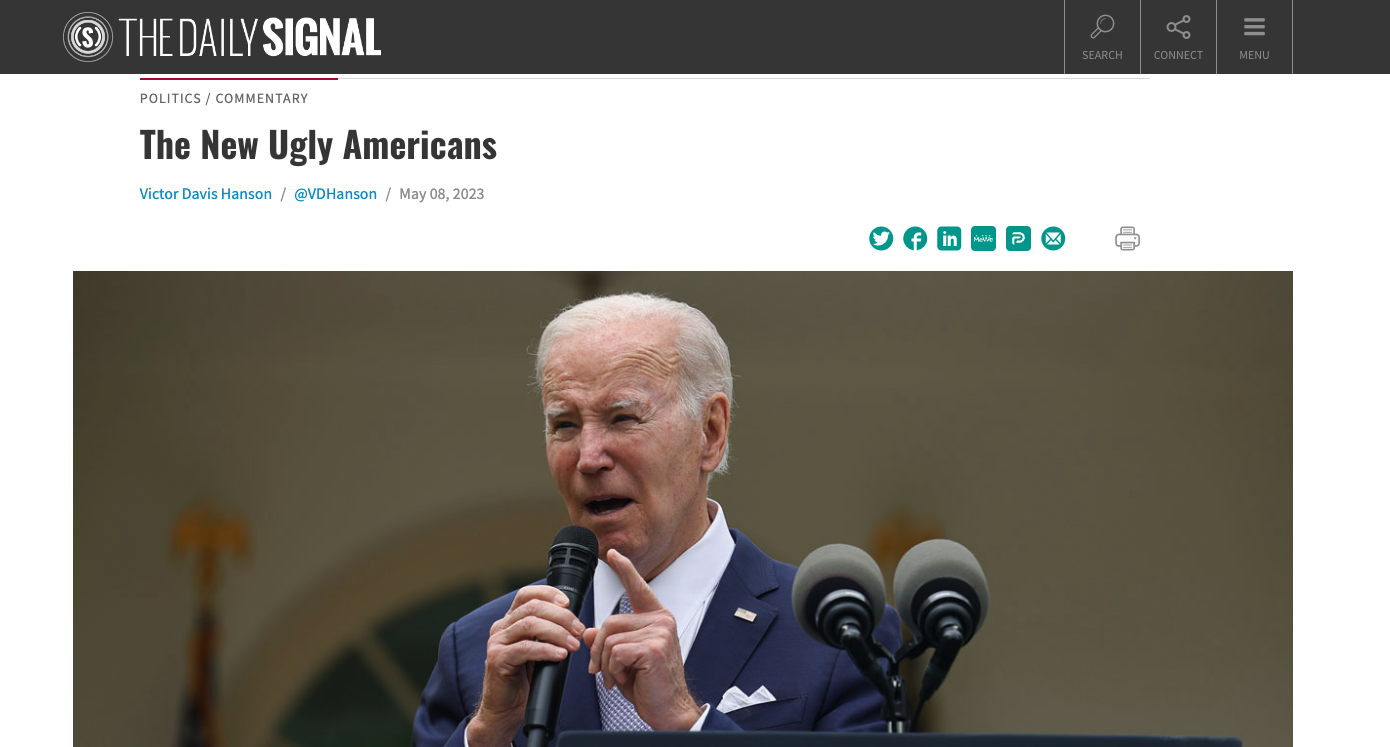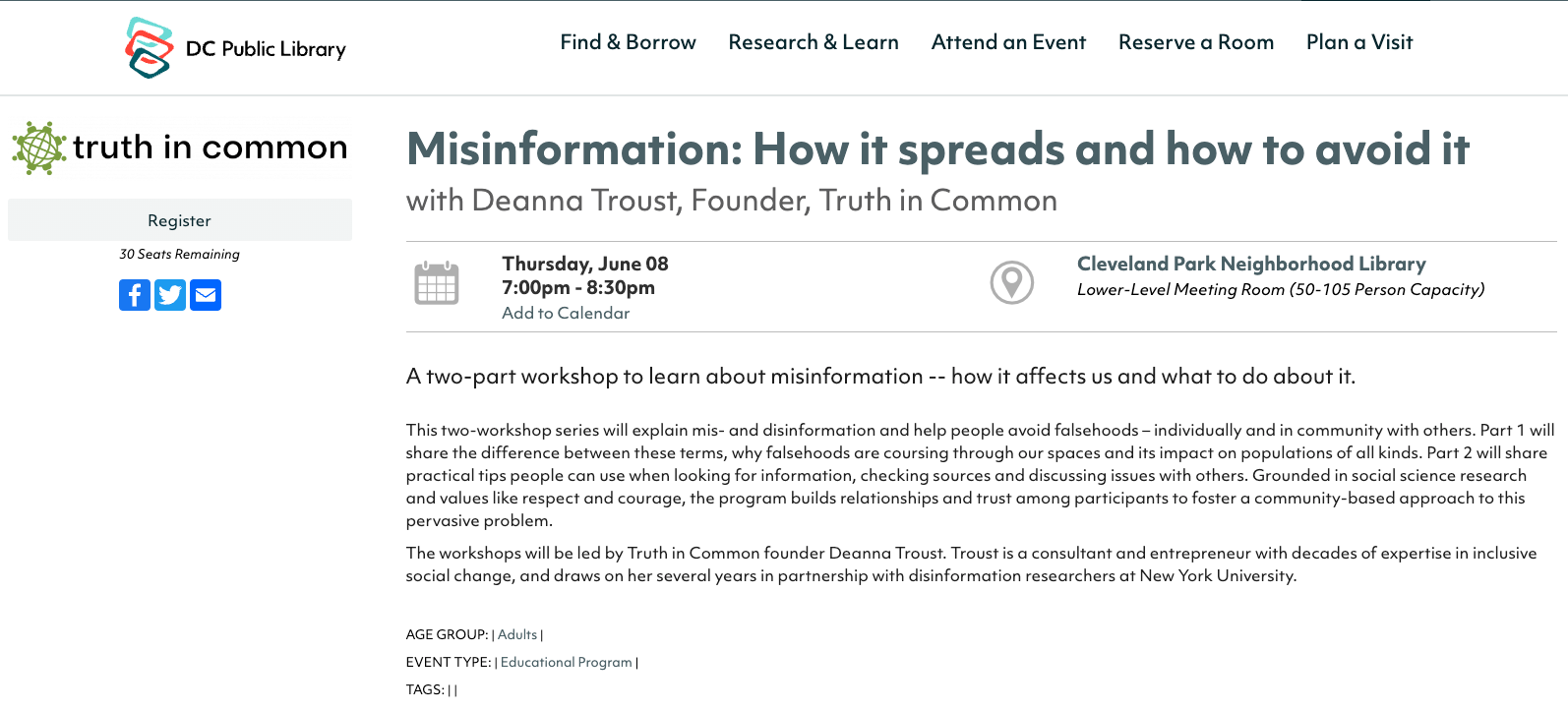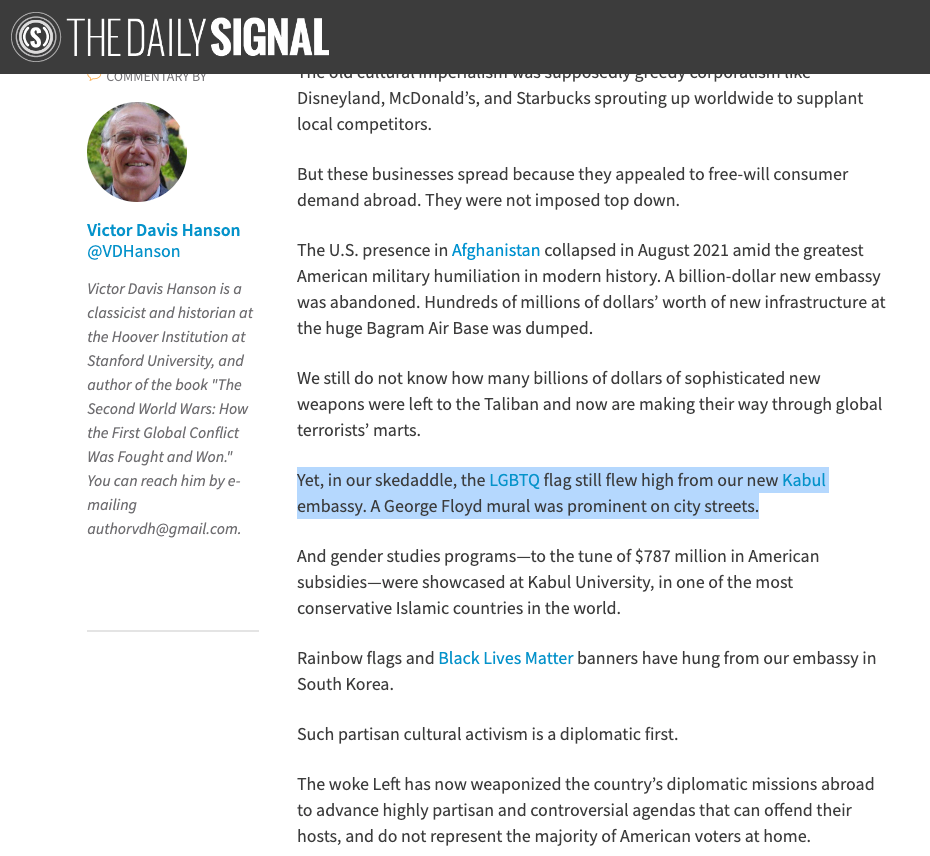Misinformation techniques: No longer just for the fringe

The other day, a friend shared this opinion piece with me. It took me about 10 seconds to realize that it included an apparent reference to a deep fake, and another 10 to find additional misleading content. And I'm not a professional fact-checker.
The author was a Stanford PhD – not someone you'd necessarily think was susceptible to spreading misinformation.
Read on for more about an op ed that, despite being that easy to check, reached a subscriber base of over 400,000 with misinformation intact.
Events and insights
Truth in Common hits DC Public Libraries. Our first, in-person digital literacy workshop series for DC residents is set for the Cleveland Park Library on two subsequent Thursdays in June – June 8 and June 15, from 7-8:30.
Register here – it's free and all local folks are welcome! In fact, I am counting on you to heckle.

Parenting and social media: It's complicated. I talked with Gabriele Nicolet, host of the Complicated Kids podcast, about how TikTok can be especially "sticky" for kids with attention issues, chatbots on Snapchat and my take on phones and privacy:

Check it out, parents, and follow this space for similar conversations and ways to engage. Send me feedback also, if you have it.
A credentialed author, a powerful outlet and still, readers are misled
The op ed shown above, titled "The new ugly Americans," was written by Victor Davis Hanson, senior fellow at the Hoover Institute at Stanford University. It ran in the Heritage Foundation's blog, The Daily Signal, on May 8. It's bad practice to share misleading content so I'm not linking to it; there are screen shots below and you can search for it if you like.
First though. If you have a knee-jerk reaction to the Heritage Foundation – e.g. you're thinking, of course they share misinformation! – or this particular scholar I'd like you to pause, name it and then set it aside. Because this is not a political rant. It's an exploration of how misinformation – intentional or otherwise -- can show up in an outlet that says it's dedicated to investigative and feature reporting and is staffed by dozens of reporters.
Furthermore, the author is entitled to his opinions and to sharing them via a conservative outlet. He's a widely respected historian, a cable news commentator and has close to 300,000 followers on Twitter. He also has political viewpoints that are immediately obvious if you listen to his podcast, where even the ads have a political bent.
His op ed reflects those views, and it also misleads. Here's how, so you can watch for these techniques in the future.
1. It ran with a claim that had been debunked by a quality news source.
The claim: See the highlighted text.

The fact check – I knew administrations had been banning and reinstating embassies' abilities to fly "LGBTQ flags" but it seemed unlikely that we flew one in such a conservative, religious country. Unless as part of a last-ditch effort to stick it to the Taliban as they took over the country? Skeptical, I opened an incognito browser and searched it up. This Reuters article was the first return.

As you can see in the above, what appeared to fuel Hanson's comment was a deep fake – someone had Photoshopped the flags onto an image of the embassy with military helicopters overhead, then shared it as authentic.
I try to give people the benefit of the doubt, especially those with research chops like Dr. Hanson. Maybe he made a mistake? Or perhaps personal biases made him less inclined to verify. We call that confirmation bias and it happens all the time (though hopefully less often among folks with his background).
Whatever happened in drafting it, the outlet certainly didn't check it before publishing.
Then I noticed something else.
2. The links in the claim statements direct you to content that's off topic.
Scroll back up. See how "LGBTQ" is linked? You'd think it would steer you to some kind of evidence that the flag actually flew there. Instead it takes you to a story about a Colorado web developer who's refusing to make wedding sites for gay couples.
That disconnect is problematic for two reasons:
- Normally this link would be added to define LGBTQ or substantiate the claim in the sentence. Not to direct the reader to a story about LGBTQ discrimination (or simply promote additional Daily Signal content). A better choice might be the Foreign Policy piece I linked to above, which explains the cycle of banning and permitting flying Pride and similar flags on U.S. embassies.
- At a time when news is often quickly scanned, readers may see the link's emphasis – it's bold and colored – as tacitly evidentiary. If we trust the publication and/or the author we may not bother clicking the link and just assume they've provided receipts.
It happens again a bit further down – the Black Lives Matter link steers you to an unrelated article.
We don't know whether the author or editor inserted these links. Outlets have policies for how they link to external content, often trying to minimize the chance that you'll leave the site and not come back. Using this technique across the board wouldn't be very credible, but we know that marketing plays a strong role in these decisions.
At a time when misinformation is rampant, it's important to highlight even the subtle tactics people use to persuade and mislead.
In the interest of transparency about my personal bias: I question flying a Pride flag in a country where its presence could be offensive to important stakeholders. I helped put one up outside our church in Washington, DC because it was an important and appropriate statement of support for and from our community; I advise clients on these kinds of matters as well. But marriage equality is law in the U.S.; flying a Pride flag on the embassy in Kabul feels like proselytizing by the U.S. government and I'm not a fan of that. Your views may be different, and I respect that.
What should we expect from journalism?
Communicators and journalists know that authors of quality content back up their statements with credible, often third-party sources. I've written and placed numerous op eds; you have to cite claims to even be considered by a decent outlet, and they still run it through their own fact-checking process. The piece in question would have been rejected or corrected even if written by the Chargé d'Affaires of the U.S. Mission to Afghanistan herself (remember that there's no longer a U.S. embassy or ambassador in Kabul).
If we care about the truth, we must check our sources. And where possible, model this behavior for family, friends and colleagues. It truly matters.
The kicker is when that content is from "the other side." Hopefully I've shown that it's possible to challenge falsehoods in any outlet without descending into polarized commentary.
Was I successful? Let me know. And if you see something false, please say something!
Or send it to me, and I will.


